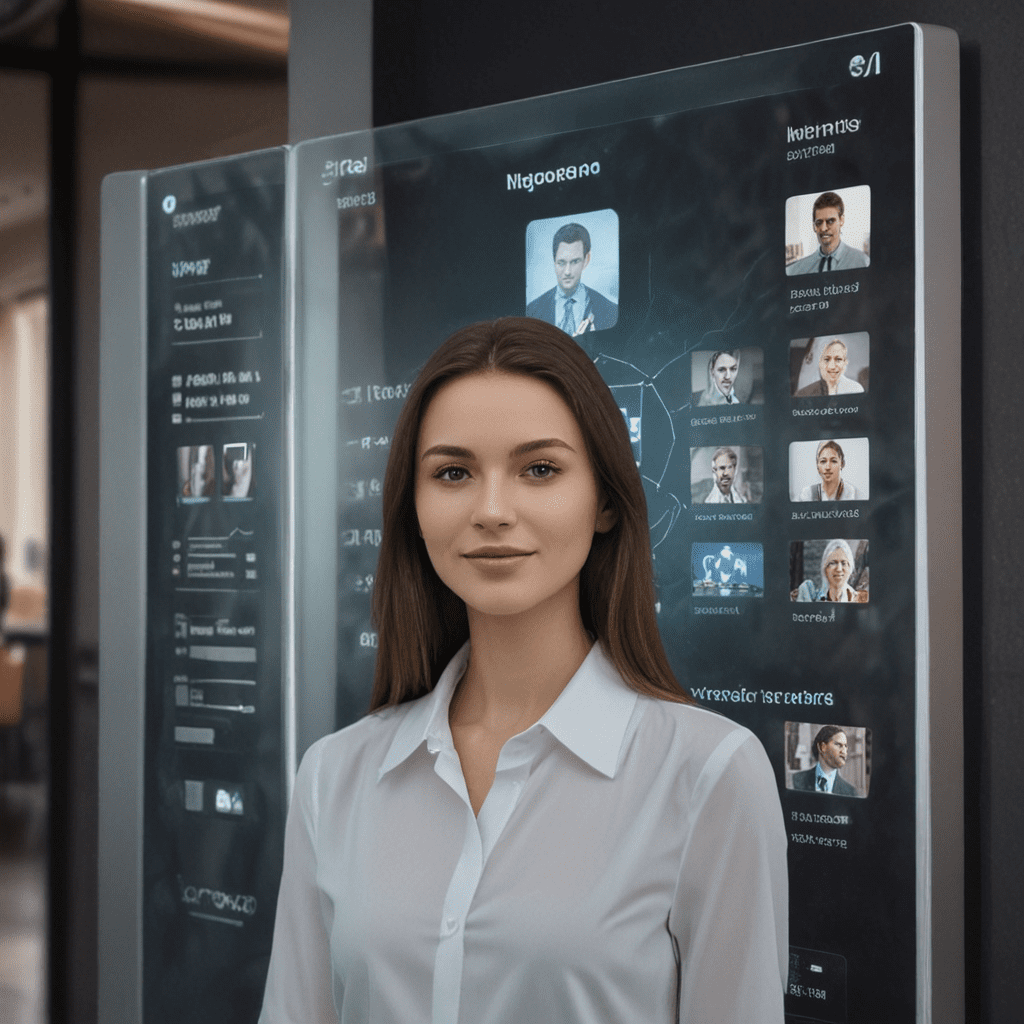1. Introduction: The Rise of Facial Recognition Technology
The advent of facial recognition technology has revolutionized the sphere of digital identity verification. Fueled by advancements in artificial intelligence (AI) and machine learning algorithms, this technology has emerged as a reliable and efficient method for verifying an individual's identity. Its increasing adoption across various industries underscores its transformative potential in reshaping our digital interactions.
2. Understanding Facial Recognition: Principles and Methods
Facial recognition technology hinges upon the analysis of unique facial features to identify individuals. It employs computer vision algorithms to extract and compare a range of distinctive characteristics, such as the distance between eyes, shape of the nose, and contour of the jawline. These algorithms can process both still images and video footage, making facial recognition an applicable solution for both physical and virtual environments.
3. Evolution of Facial Recognition Systems: From Early Days to Advanced Techniques
The evolution of facial recognition systems has witnessed significant strides in accuracy and efficiency. Early techniques relied on basic feature matching, while contemporary systems leverage deep learning algorithms that analyze intricate patterns within facial images. These advancements have enabled the development of highly sophisticated systems capable of recognizing individuals even under challenging conditions, such as variations in lighting and facial expressions.
4. Advantages of Facial Recognition in Identity Verification: Convenience and Security
Facial recognition offers numerous advantages in the context of digital identity verification. Its primary benefit lies in its unparalleled convenience. Unlike traditional methods that involve manual verification or knowledge-based authentication, facial recognition provides a seamless and user-friendly experience. Furthermore, it enhances security by ensuring that the individual presenting themselves is the rightful owner of the identity being verified. This eliminates the risk of identity theft and fraud.
5. Challenges and Limitations of Facial Recognition: Biases and Privacy Concerns
Despite its benefits, facial recognition technology is not without its challenges and limitations. Concerns have been raised regarding biases in facial recognition algorithms, particularly in identifying individuals from marginalized groups. Additionally, the widespread use of facial recognition raises privacy concerns, as it involves the collection and storage of highly sensitive biometric data. Addressing these challenges requires responsible implementation and regulation to ensure the ethical and equitable use of this technology.
6. Applications of Facial Recognition in Digital Identity Verification
The applications of facial recognition technology in digital identity verification are extensive and growing rapidly. It is widely employed in:
Banking and Finance: Facial recognition provides a secure and convenient method for account authentication, reducing the risk of fraud and identity theft.
E-commerce and Online Transactions: Facial recognition enhances the safety and efficiency of online purchases by verifying the identity of individuals making transactions.
Government Services: Facial recognition assists in streamlining identity verification processes for government services such as passport issuance and border control.
Healthcare: Facial recognition can improve patient identification and access to medical records, enhancing the accuracy and efficiency of healthcare delivery.
Law Enforcement and Security: Facial recognition plays a crucial role in identifying individuals for law enforcement and security purposes, aiding in crime prevention and investigation.
7. Future Advancements in Facial Recognition: Integration with Other Technologies
The future of facial recognition technology is bright, with ongoing advancements promising even greater capabilities. Integration with other technologies, such as:
5G and IoT: 5G networks and the Internet of Things (IoT) will enable the deployment of facial recognition systems in various environments and devices.
Edge Computing: Edge computing brings facial recognition processing closer to the source, reducing latency and enhancing real-time applications.
Biometric Fusion: Combining facial recognition with other biometric modalities, such as fingerprint or iris recognition, will further strengthen identity verification systems.
8. Ethical Implications of Facial Recognition: Data Privacy and Societal Impact
The widespread adoption of facial recognition technology raises ethical concerns related to:
Data Privacy: The collection and storage of biometric data by facial recognition systems warrant careful consideration of privacy implications.
Bias and Discrimination: Facial recognition algorithms must be unbiased and inclusive, ensuring fair and equitable treatment of all individuals.
Surveillance and Privacy Erosion: The use of facial recognition for mass surveillance can erode individual privacy and limit personal freedoms.
9. Regulatory Landscape for Facial Recognition: National and International Policies
To address the ethical and societal implications of facial recognition, regulatory frameworks are evolving worldwide. Governments are developing policies to:
Establish Guidelines for Use: Defining appropriate use cases and restricting the deployment of facial recognition systems for specific purposes.
Protect Data Privacy: Ensuring responsible data collection, storage, and sharing practices to safeguard individual privacy.
Address Bias and Discrimination: Mandating fairness and transparency in the development and deployment of facial recognition algorithms.
10. Conclusion: The Transformative Power of Facial Recognition in Digital Identity Verification
Facial recognition technology has revolutionized digital identity verification, offering unparalleled convenience and security. As the technology continues to evolve and ethical concerns are addressed, facial recognition will play an increasingly significant role in shaping the future of secure and seamless digital interactions.
FAQ
Q: Is facial recognition technology 100% accurate?
A: While facial recognition systems have achieved high levels of accuracy, they are not infallible. Factors such as lighting conditions, facial expressions, and aging can affect accuracy.
Q: Can facial recognition systems be fooled?
A: Facial recognition algorithms are constantly being refined to mitigate against spoofing attacks. However, sophisticated techniques like deepfakes pose ongoing challenges.
Q: How secure is facial recognition compared to other biometric methods?
A: Facial recognition is generally considered more secure than traditional biometric methods like fingerprint or iris recognition, as it is less susceptible to forgery or theft. However, it is crucial to implement robust security measures to prevent data breaches.


